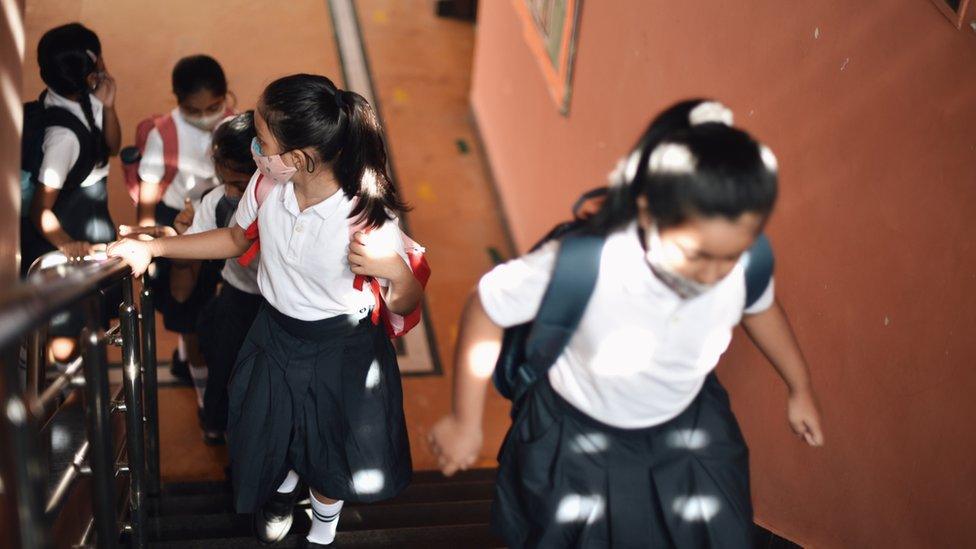China says no 'unusual or novel pathogens' after WHO queries respiratory outbreaks
- Published

China has reported no "unusual or novel pathogens" in clusters of child pneumonia cases, the World Health Organization has said.
Beijing has attributed a rise in flu-like illnesses to the lifting of Covid curbs, said the WHO, which had requested for more data on the cases.
Still it urged residents in China to take precautions, like getting vaccinated and wearing masks.
Local media had in recent days reported hospitals being overwhelmed.
In a statement, external on Wednesday, the WHO said it requested China for more information on reports in the media and from ProMed - a global outbreak surveillance system - of "clusters of undiagnosed pneumonia in children in northern China".
Pneumonia is a general medical term used to describe an infection and inflammation of the lungs. It can be caused by many different viruses, bacteria or fungi.
After the WHO's request, state-run Xinhua news agency, external published an article which quoted officials of China's National Health Commission (NHC) as saying they were paying close attention to the diagnosis and care of children with respiratory illnesses.
Later on Thursday, the WHO said in a statement, external that China has not detected any "unusual or novel pathogens", and that the increase in respiratory illnesses spreading in the north of the country was due to "multiple known pathogens".
Since October, northern China has reported an "increase in influenza-like illness" compared to the same period over the past three years, the WHO said.
"Some of these increases are earlier in the season than historically experienced, but not unexpected given the lifting of Covid-19 restrictions, as similarly experienced in other countries," the statement said.
The WHO said it is "closely monitoring the situation and is in close contact with national authorities in China".
While mentions of China and a wave of infection can get people jittery as it brings memories of the Covid-19 pandemic, it's good practice for the WHO to ask for clarity.
It is also not unusual for the WHO to ask countries for more information about a cluster of illnesses. They do so almost every day.
A specialist WHO team combs through thousands of media reports and internal surveillance information on circulating diseases from countries on a daily basis. Experts then decide whether they need more information, in case it could have the potential to become a public health emergency of international concern.
But it is unusual to announce the request for more information publicly. In general, this has previously been done through private channels between the WHO and health officials in a country.
The UN agency is no doubt mindful that people might be more jumpy about viruses reported in China with the not so distant memory of Covid-19. The WHO is also trying to be more transparent in the aftermath of the pandemic.
The UK's health security agency (UKHSA) said it was closely monitoring the situation.
Last week, the Chinese NHC said there had been a rise in several respiratory diseases across the country: in particular influenza, Covid, mycoplasma pneumoniae - a common bacterial infection affecting younger children - and respiratory syncytial virus (RSV).
Officials attributed the rise to the lifting of Covid restrictions.
Other countries, including the UK and the US, saw similar surges in flu-like illnesses once pandemic restrictions were lifted.
"China is likely experiencing a major wave of childhood respiratory infections now as this is the first winter after their lengthy lockdown, which must have drastically reduced the circulation of respiratory bugs, and hence decreased immunity to endemic bugs," said Prof Francois Balloux of the University College of London Genetics Institute.
Prof Paul Hunter, of the University of East Anglia (UEA), said at present there was too little information to make a definitive diagnosis of what was causing the infections.
He added: "Overall, this does not sound to me like an epidemic due to a novel [new] virus. If it was, I would expect to see many more infections in adults. The few infections reported in adults suggest existing immunity from a prior exposure."
Related topics
- Published31 October 2023
- Published6 October 2023
